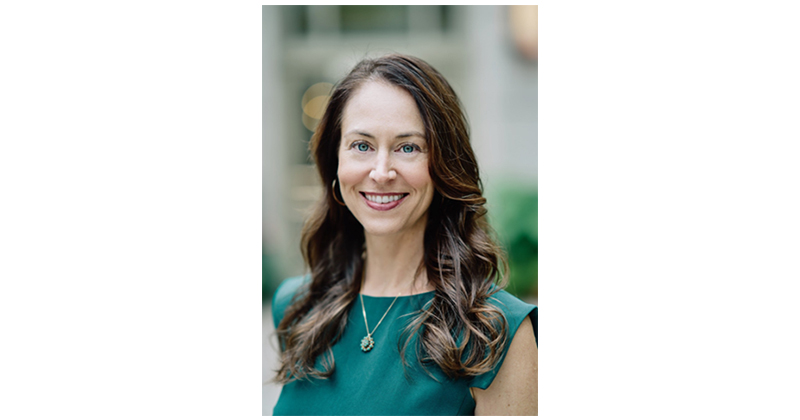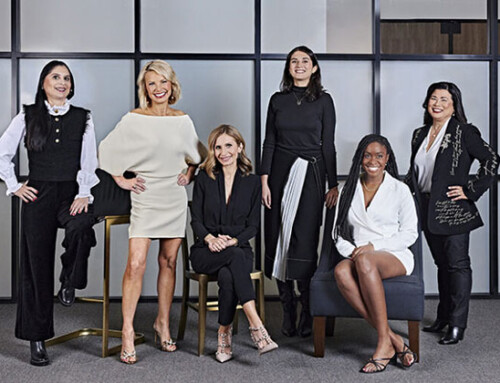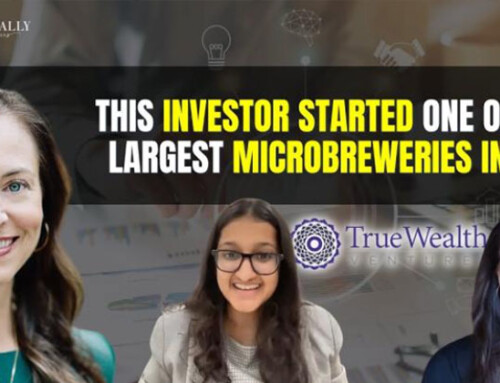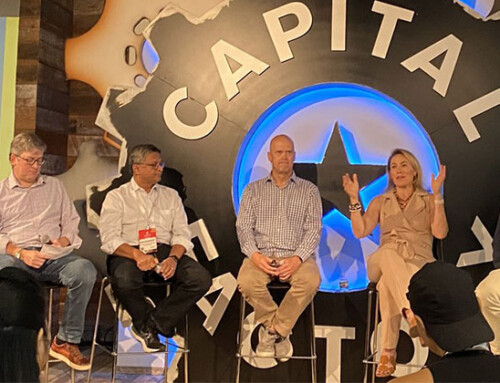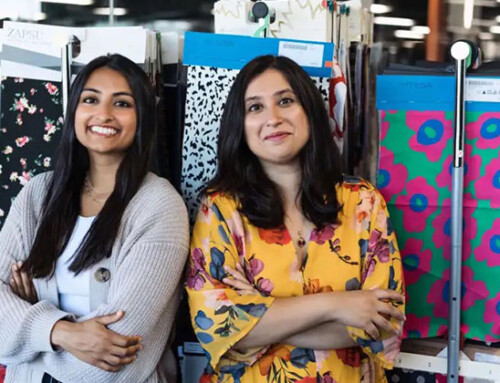Social Impact Investors: How Sara T Brand of True Wealth Ventures Is Helping To Create Women-Led Companies That Help Improve Environmental and Human Health
Chef Vicky Colas
Sep 11
As a part of our series about “Social Impact Investors”, I had the pleasure of interviewing Sara T Brand, Founding General Partner of True Wealth Ventures. It is an early-stage venture capital fund investing in women-led businesses whose core value proposition is improving environmental and/or human health. She is also the co-founder of (512) brewing, the largest draught-only,self-distributing microbrewery in the country before COVID. Sara was previously in venture capital and management consulting in the Bay Area as well as in a variety of strategic and operational roles in large tech companies. Sara holds a Ph.D. and M.S. in green design and manufacturing from UC Berkeley and a B.S.in mechanical engineering from UT Austin.
Thank you so much for doing this with us!Before we dive in, our readers would love to learn a bit more about you. Can you tell us a story about what brought you to this specific career path?
Sure, and thank you so much for interviewing me. I have a bit of a circuitous path into starting a venture capital fund focused on investing in women-led companies, but the common thread seems to be that my background was all very male dominated up until now. I received three degrees in mechanical engineering where I like to say I basically had the bathroom to myself. I worked in technical roles in the semiconductor industry and then in management consulting with McKinsey & Co in San Francisco where I worked across the tech industry in Silicon Valley. It was from that mix of technical and management consulting experience that I went into venture capital, thinking it was the perfect blend of the two where I could meet with technical entrepreneurs solving the world’s next challenges to helping the portfolio companies out with whatever business challenges they had. I was right and loved my role in VC, but I also wanted to get some more operational experience under my belt to be a more helpful and better VC. I worked in the tech industry again for another decade in a combination of operational and strategic roles, working directly for 3 Fortune 500 CEOs and eventually being asked to be the executive sponsor of the company’s women’s forum, as I was the only woman vice president in the 10,000+ person company who had any technical or operational background. This was a major wake up call for me as I had no awareness of that until I was told that. I was so used to being the only woman on the client team or at the VC firm or in the room that I literally was blind to it. Then, I realized I had also never met another woman in VC. Knowing I had wanted to get back into venture capital, this realization was the impetus for doing the research to find that there was an utter lack of women entrepreneurs receiving VC dollars as well as women at VC firms making investment decisions.I also found that women-led companies that did raise VC dollars drove better returns using less capital. Shortly thereafter, I realized this was the best business opportunity I had ever seen, and I needed to start my own fund to invest in this blind spot.
Can you share a story with us about the most humorous mistake you made when you were first starting? What lesson or take-away did you learn from that?
Well, what comes to mind is trying to maintain my Corporate America calendar rhythm of scheduling back-to-back 30-minute meetings without lunch breaks from 8am-5pm. I had been used to having an executive admin to help be put together and manage my crazy schedule of meetings, bring me lunch and not have to leave an office building complex other than for travel. When I started the fund, that was not my reality anymore, and it was a very “yang” mode of operation. I found myself driving all over town like a mad woman, meeting folks in the ecosystem or potential investors for coffee meetings, and I realized I had to slow down since I needed more time with people I was meeting for the first time. But more importantly, I realized no one out in the world had done what I wanted to do yet, so I shouldn’t be in execution mode. I needed to slow down and do more of the internal work of creation. This was more of a “yin” mode that I was not accustomed to. In fact,I had never done it before, so it was really hard for me to slow down to think and create more, as I had been so used to going and doing and never “wasting a minute.”
Are you able to identify a “tipping point” in your career when you started to see success? Did you start doing anything different? Are there takeaways or lessons that others can learn from that?
I think the tipping point for me was starting True Wealth Ventures. Up until that point, I had always had the stereotypical success in my career, but I was always looking for what I was going to do when I grew up and was not satisfied with where I was. What I did differently was to start doing the internal reflection work of considering what gave me energy and what drained me, what my unique strengths were and how to align those to where I saw the biggest problems in the world. I hadn’t found any role models or career paths that looked compelling, and they say “if you can’t see it, you can’t be it.” So, I had to create my dream job for myself. I think everyone has their unique skill sets and passions to solve specific issues in the world, but finding that fit is not easy, especially when it hasn’t been done yet.
None of us are able to achieve success without some help along the way. Is there a particular person or mentor to whom you are grateful who helped get you to where you are? Can you share a story about that?
I have had the pleasure of working for three Fortune 500 CEOs directly along with many fantastic executives in their C-suites where I learned so many management and leadership lessons. They really sponsored me with challenges, promotions, and their trust. However, I feel like it is actually my husband who helped me get to my career aha moment to start True Wealth Ventures. I was doing an exercise out of the Centered Leadership book by Joanna Barsh, a former McKinsey & Co. director, while trying to figure out what I was going to do when I grew up. The exercise was to write up what you considered your biggest accomplishments and then share them with a colleague to get their feedback. Since I was on vacation with my husband, I asked him for his feedback. He said my assessment sounded right except that I had left out that I did all that as a woman. At first, I was actually insulted as I didn’t like to think that being a woman had anything to do with my accomplishments.However, as he explained that being a woman was what made it so much more unique, I finally stopped trying to ignore that I was a woman and started to look at why it was so unique, why I had so few women colleagues and how I could change that.
You have been blessed with great success in a career path that many have attempted, but eventually gave up on. Do you have any words of advice for others who may want to embark on this career path but are afraid of the prospect of failure?
I am really glad that I did not see the numbers on how many ventures capital funds register with the SEC to raise a fund, but then never have a first close nor how many more never got near their fund AUM target. My advice for people raising their own funds is to understand that fundraising for that first fund is really hard work, while you don’t get paid and are expected to invest in your fund personally. I think that last part has kept a lot of women and people of color out, and the homogenous ecosystem really needs more diverse investors to break into it. A lot of people told me it was going to be hard work when I set out, but I thought it was just inefficient, many-hours type of work, but not necessarily hard work.However, I found that it was hard work as fundraising is really a sales job,even though most folks getting into VC are probably in it for the investing role. One also needs to be a good fund manager with the discipline and structure behind that, as well as a helpful board member and advisor to their portfolio companies to do well in the role long term. There are a lot of hats to wear, and you need to be able to wear all of them as a first time fund manager.
Ok, thank you for that. Let’s now jump to the main part of our discussion. The United States is currently facing a very important self-reckoning about race, diversity, equality and inclusion. This is of course a huge topic. But briefly, can you share a few things that need to be done on a broader societal level to expand VC opportunities for women, minorities,and people of color?
Well, on a societal level (versus a VC ecosystem level where I would answer this question differently) I would say that having women, minorities and people of color taking ownership of the fact that they are investors is step one. I speak to so many women who don’t consider themselves investors. However, women make 85% of consumer purchases and 80% of all healthcare decisions, so the reality is that they are making micro investments every day that literally move markets. If they start thinking of themselves as investors and buying products from companies and management teams whose values they align with, they can literally help to decide what companies are successful and which are not. They also have unique insights into what problems don’t have good solutions to become better early stage investors or entrepreneurs themselves. Women and people of color really have advantages seeing these opportunities that are largely a big blind spot to the current,homogenous investment world.
You are a VC who is focused on investments that are making a positive social impact. Can you share with us a bit about the projects and companies you have focused on, and look to focus on in the future?
Why, yes, as this is one of my favorite subjects. We invest exclusively in women-led companies whose core value proposition is improving environmental and/or human health. We have 10 portfolio companies in our current portfolio with six on the health side and 4 on the environmentally sustainable side. For our first fund, we required a consumer angle so that the consumer or patient pulled that technology or product through the market. However, we are not going to require that consumer-angle for our second fund, as we are seeing a lot of opportunities in community or enterprise health or too far up the supply chain for consumer transparency even though the company is absolutely improving environmental and/or human health. We celebrate our female founders and their companies on our portfolio page to find out more about each.
What you are doing is not very common. Was there an “Aha Moment” that made you decide that you were going to focus on social impact investing? Can you share the story with us?
There were sort of two. My degrees are all in mechanical engineering, and my PhD was in green design and manufacturing with minors in public health and energy & resources. I wanted engineers to think about the environmental and health impacts of their designs while they were still in the design stage, when there is a lot more flexibility to design a solution that minimizes negative impacts while optimizing performance. This is what my PhD thesis was about, a tool to quantify those trade-offs in the early design stages. About a decade later I joined the external advisory boards of UT’s College of Engineering and UC Berkeley’s Mechanical Engineering Department, my alma maters who also happen to be among the top public engineering schools for awarding the most degrees to women. I knew I wanted to get back into the VC industry, I knew what I wanted to invest in, and I couldn’t find any existing opportunities. I had moved back to Austin from the Bay Area and was excited about the opportunity in Austin and Texas over the coming decades with the innovative culture yet lack of existing VC funds. I also knew there was a lot of innovation happening in Austin in the spaces I was interested in, but all the Texas-based VC funds (who also had all male investors at the time) were primarily investing in B2B SaaS companies. My first aha moment was when I told a former McKinsey friend, who was very well networked, what I wanted to do and who I should talk to who might know of opportunities in the space. She was silent for a while thinking, and she finally said, “Um…I would tell them to talk to you.” I realized there was no one out there doing what I wanted to do yet, so I needed to pave the way.
My second aha moment was through my mentioned work on the engineering advisory boards and from my own experience getting my degrees and talking to the women engineers. These women universally wanted to make a positive impact. They didn’t care about the starting salaries or the cool new maker spaces when considering engineering school. They were all on unique personal missions to solve some problem. I realized that the impact areas I was interested in investing in were also the ones in which other STEM-oriented women seemed naturally attracted. It was all very self-reinforcing in that more women would be starting or joining companies in these impact space and women-led companies also outperformed financially, so it made for a great and unique investment thesis.
Can you share a story with us about your most successful Angel or VC investment? Or an investment that you are most proud of?What was its lesson?
That is liking asking me which of my children I am most proud of, so I can’t answer that as I truly am so proud of all of our investments.
Can you share a story of an Angel or VC funding failure of yours? What was its lesson?
We invest at the Seed stage, and we are proud to say that our entire portfolio is still thriving, so I have no failures to report on yet. All of our companies had to modify in one way or another over this last year with COVID, but we have seen our companies become more relevant since they are all solving critical environmental and human health issues which have now taken more of center stage.
Is there a company that you turned down, but now regret? Can you share the story? What lesson did you learn from that story?
Nope, not yet. We have been very thoughtful on why we turn companies down and why they are not a fit for out first fund’s investment thesis. We are expanding our aperture for Fund II to include some of the companies that we liked but had to pass on for Fund I, but it was important that we did what we said we were going to do for Fund I.
Super. Here is the main question of this interview. What are your “5 things I need to see before making a VC investment”and why? Please share a story or example for each.
Sure. There are about five things we need to see to fit our investment thesis. First, we need to see that there is at least one woman on the founding or senior executive team with significant strategic influence and ownership. Secondly, we need to see that the company’s core value proposition is improving environmental and/or human health. Thirdly, we need to see that the company is raising a round size at a valuation range that makes sense for our Seed stage fund, and I would also include here that their expected follow-on rounds also fit our model. We reserve two-thirds of our investment capital for follow-ons, but we also look for capital efficient companies that don’t anticipate raising a lot of follow on money. Fourth, we need to see high growth potential to get to an exit valuation in the $100M+range. Fifth and related to that, we want to see the founders are planning on an acquisition exit (versus an IPO), since that is how most exits happen and generally take less time and capital.
You are a person of enormous influence. If you could inspire a movement that would bring the most amount of good to the most amount of people, what would that be? You never know what your idea can trigger. 🙂
Well, I hope that I have already started to inspire a movement of more women investing in more women VCs who are investing in more women entrepreneurs. My partner, Kerry Rupp, and I have been speaking for years about not only the benefits of investing in women entrepreneurs, but also the benefits of investing in women VCs. Women in VC naturally drive more investment into women CEOs and founders. We have been told we have inspired other women to start their own firms, and the rising tide raises all boats here. We believe we were the largest VC fund at the time of our final close in January 2018 to have an exclusive gender-lens investment focus and portfolio.We also believe that we were the first VC fund to have over 80% of our investors into the fund be women. We define women LPs (limited partners) as single women or the woman on behalf of a couple, family office or foundation who led the investment decision. That percentage seemed to be unprecedented,and more women investing in VC funds is a very important movement. Women are anticipated to control two-thirds of U.S. investable assets by 2030. Women haven’t historically been investing in venture capital as an asset class. So,if women don’t start investing in venture capital, it could be a real issue for this innovation engine in our economy. Women have also shown to care more about the diversity of the management teams and the social impacts of the companies in which they invest, so I believe this is a great trend for everyone. Women invest their wealth back into their communities and families, so wealth flowing to women is the most efficient and effective ways to lift up and improve a community.
If you could tell other young people one thing about why they should consider making a positive impact on our environment or society, like you, what would you tell them?
I thankfully am not sure I need to, as I think the younger generation already gets this and puts their money where their mouth is more than any of the previous generations.
We are very blessed that a lot of amazing founders and social impact organizations read this column. Is there a person in the world with whom you’d like to have a private breakfast or lunch with, and why? He or she might just see this. 🙂
Thanks for that question. I would love to share a meal with Melinda Gates as she is the most visible leader in vocalizing that many of the wrongs in the technology and VC ecosystem could be righted by investing in more women VCs. She is one of the world’s biggest advocates for women’s representation in STEM fields, women’s health, women’s unpaid work,etc., so I would love to speak with her about how to most effectively address these issues she has studied so much and has the capital to really impact.
How can our readers follow you online?
They can follow us at www.truewealthvc.com.We keep our website updated with articles about us and our companies as well as upcoming events where we will be.
Thank you so much for this. This was very inspirational, and we wish you only continued success!
Link to Read More: https://medium.com/authority-magazine/social-impact-investors-how-sara-t-brand-is-helping-to-create-women-led-companies-that-help-d6e4eb5a69f7

